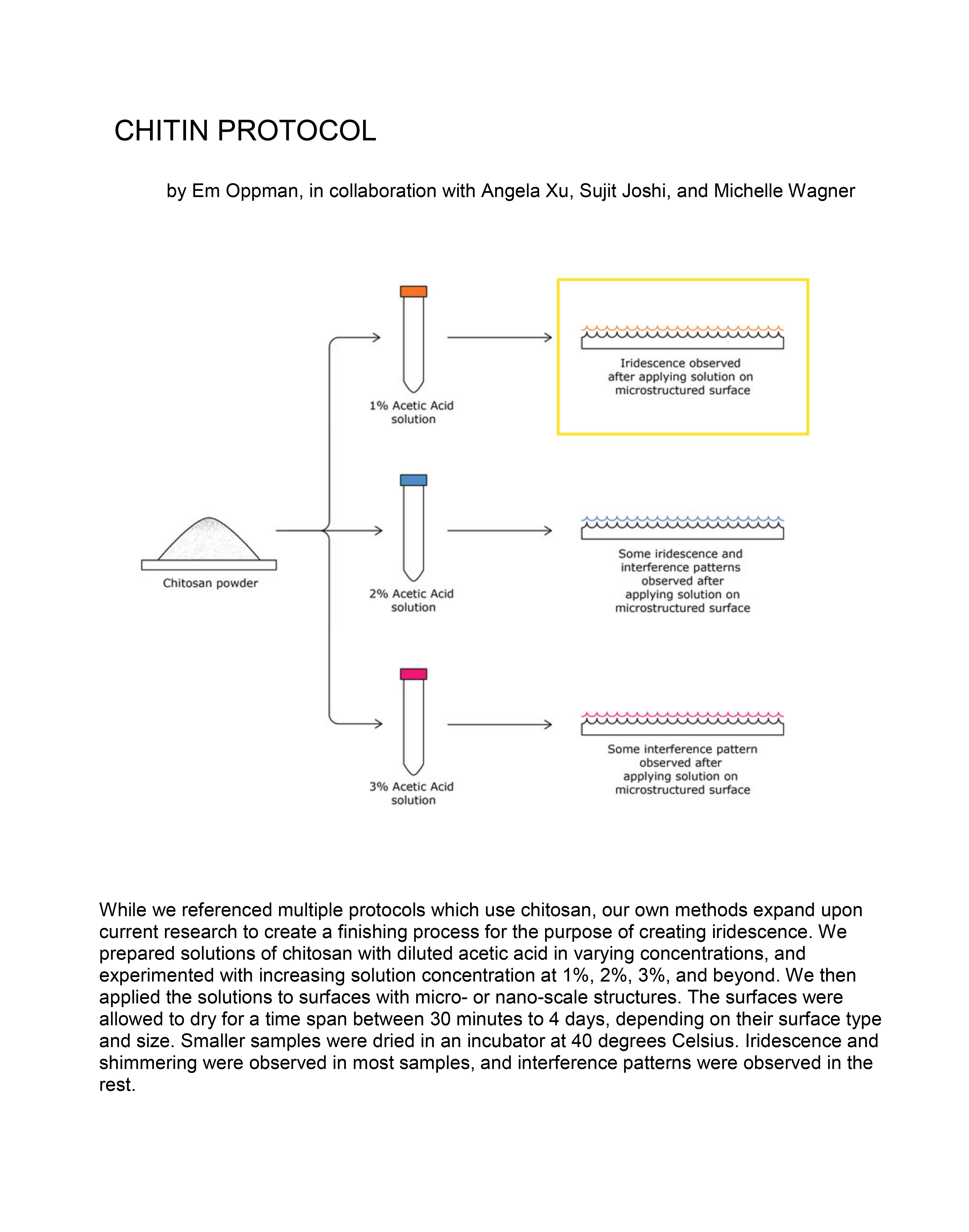 Samples of guanine crystals under an optical microscope (top L & R) and chitosan layers in a petri dish (bottom L)
Samples of guanine crystals under an optical microscope (top L & R) and chitosan layers in a petri dish (bottom L)
To address the ecological and human health hazards resulting from lead-laced paint being used on Mardi Gras beads and in the fashion, automotive, and decorative arts industries worldwide, I am developing a safe and sustainable alternative to the petroleum-based iridescent paint currently used. Mimicking insects and seashells, whose shared quality of structural coloration creates organic versions of the petroleum-derived iridescent finish, I looked to chitin to use as the basis for this paint. Because chitosan is found in the exoskeletons of shellfish, using local seafood waste from Southeast Louisiana will create a sustainable closed loop of waste and material for the paint.
I invited co-collaborators Angela Xu, Sujit Joshi, and Michelle Wagner to join me in the research, testing, and development of paint prototypes. We produced several viable models for the creation and application of a chitosan-based iridescent paint.
I invited co-collaborators Angela Xu, Sujit Joshi, and Michelle Wagner to join me in the research, testing, and development of paint prototypes. We produced several viable models for the creation and application of a chitosan-based iridescent paint.
